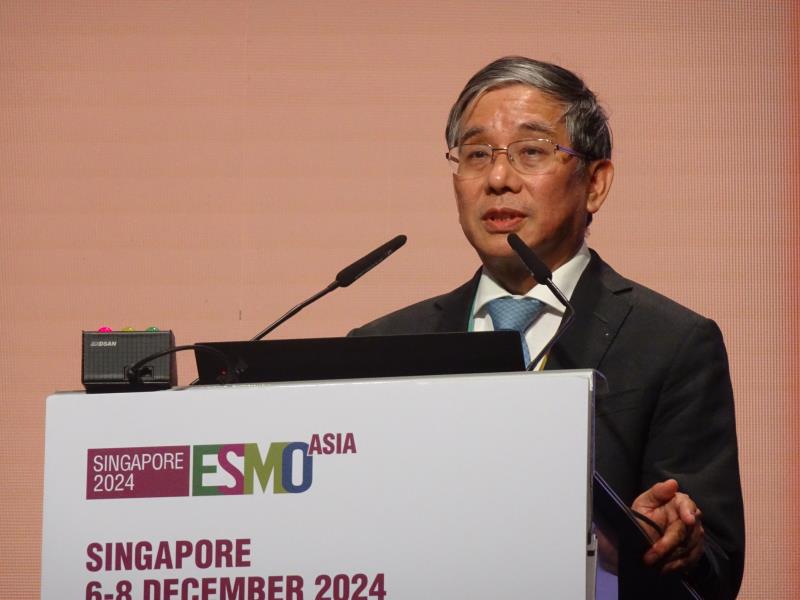Osimertinib plus chemo extends survival in Asians with EGFR-mutated advanced NSCLC





First-line treatment with osimertinib plus platinum-pemetrexed chemotherapy (CTx) induces significant improvements in progression-free survival (PFS) among Asian patients with EGFR-mutated advanced nonsmall cell lung cancer (NSCLC), which is similar with the results seen in the global population of the FLAURA2 study.
The combination treatment also has a manageable safety and tolerability profile, which is “consistent with the established individual safety profiles of osimertinib, platinum-based chemotherapy, and pemetrexed,” said Dr James Yang from the Department of Medical Oncology, National Taiwan University Hospital and Graduate Institute of Oncology, National Taiwan University in Taipei, Taiwan.
“[P]atients treated with first-line osimertinib with the addition of platinum-pemetrexed in the Asian cohort of FLAURA2 demonstrated a clinically meaningful PFS benefit [and] an encouraging trend towards overall survival (OS) benefit at the second interim OS analysis,” he added.
The Asian cohort of FLAURA2 included adult patients with locally advanced/metastatic EGFR-mutated (Ex19del/L858R) NSCLC, WHO PS 0/1, and no prior systemic treatment for advanced NSCLC. They were stratified by race (Chinese Asian, non-Chinese Asian, or non-Asian).
Eligible patients were randomly assigned 1:1 to receive either osimertinib plus CTx (osimertinib QD plus pemetrexed and cisplatin/carboplatin Q3W 4 cycles, then maintenance osimertinib QD plus pemetrexed Q3W) or osimertinib monotherapy until progression/discontinuation. The randomization sites were in China, India, Japan, Philippines, Korea, Thailand, Taiwan, and Vietnam.
PFS was the primary endpoint, while OS, objective response rate (ORR), duration of response (DOR), and safety were secondary. Data cutoff was on 3 April 2023, with a second interim OS analysis set on 8 January 2024.
Survival in Asians
In the Asian cohort, 169 patients received osimertinib plus CTx and 164 osimertinib monotherapy. The median age was 61 years, and majority were female (62 percent in the combination arm and 57 percent in the monotherapy arm). The median tumour sizes at baseline were 52 and 50 mm in the combination and monotherapy arms, respectively. [ESMO Asia 2024, abstract 630MO]
The median duration of exposure was 24 months with the combination arm and 21 months with the monotherapy arm. Osimertinib plus CTx improved PFS in Asian patients with EGFR-mutated advanced NSCLC (per investigator assessment: median, 25.5 months; hazard ratio [HR], 0.69, 95 percent confidence interval [CI], 0.51–0.94; per BICR: median, 33.2 months; HR, 0.72, 95 percent CI, 0.52–1.01).
At the second interim OS analysis, the combination treatment showed a trend towards OS benefit compared with monotherapy (median, 40.5 vs 38.3 months). Osimertinib plus CTx also improved ORR (84 percent vs 76 percent) and DOR (24.0 vs 18.0 months).
Grade ≥3 adverse events (AEs) were documented in 67 percent of patients in the combination arm relative to just 24 percent in the monotherapy arm. AEs leading to discontinuation occurred in 10 percent and 7 percent of patients, respectively. There was no incidence of G4/5 interstitial lung disease recorded.
“These data support osimertinib with the addition of platinum-pemetrexed as a first-line treatment option for Asian patients with EGFR-mutated advanced NSCLC,” Yang said.